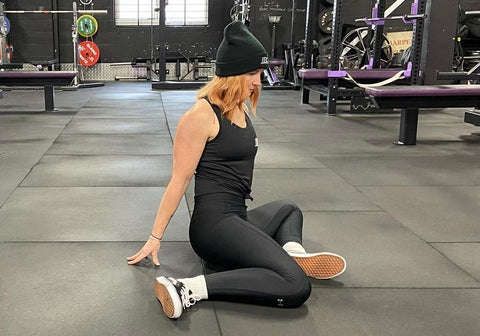Do you ever think about the things that you can do outside of your actual strength training that will benefit your progress and gains?
Mobility is a very important factor in your exercise regimen, however some of us don’t fully understand all the benefits, and others don’t include it in their workouts at all.
How can maintaining good mobility support your strength training and help to make you stronger overall?
There are two main benefits of mobility training I would like to discuss:
- Lowering the risk of injury
Better mobility reduces your risk of injury by ensuring your joints and muscles have the range of movement required for the exercise you’re performing, which is even more important when you ask them to move like this under load. Mobility work will also improve your awareness of your personal movement quality and the range of your joints, enabling you to train effectively and make exercise choices that suit you.
By reducing the risk of injury, you reduce the likelihood of having to stop training due to this, therefore your long-term consistency and progression can remain uninterrupted. Let’s consider a deadlift for example - to perform a deadlift, you need mobile hips and stable shoulders, without this you will not be able to achieve the correct position and therefore are at a higher risk of injury.
This leads us nicely onto the second reason.
- Improved functional movement and form.
Good mobility brings excellent technique and functional movement.
Having excellent form means extra gains as you’ll have the ability to work your muscles through their full range of motion in each exercise, and not a shortened limited version. Being able to get into the right positions for push, pull, squat, and deadlift exercises means the correct muscles are going to be recruited and taxed and therefore get stronger!
So, what does mobility actually mean?
Mobility exercises are controlled bodyweight movements that will help to increase your range of motion and gain control of muscles and joints.
It isn’t the same as flexibility. Mobility incorporates motion, strength, and flexibility together, which means deeper squats, better overhead work, and more effective, quality exercises overall.
Now that I have you interested and raring to go with your mobility, I bet it would be helpful to have a few exercises to get started with.
Let's start off with the greatest stretch in the world - a lovely mixture of lunge and thoracic mobility.



Next: 90/90 Hip Rotations.
These get the hips moving through internal and external rotation.



Reverse Plank Bridge.
Open the chest and shoulders and strengthen the core.

Down Dog.
Improving scapular motion and stabilising the thoracic spine and shoulders.

Squat to Stand.
Improve mobility in ankles, hips and mid-back.


You can, of course, tailor your mobility to the exercises you're going to be performing in your sessions, but working on your general mobility on a regular basis will have a huge impact on your training intensity, progression, consistency and therefore strength gains.
I challenge you to create a routine with the knowledge you've learned here and see what improvements you make in the coming months.
Move well, move often and feel happier, healthier and stronger.

 Feb 01, 2022 - Think Shaw
Feb 01, 2022 - Think Shaw


Leave a comment: